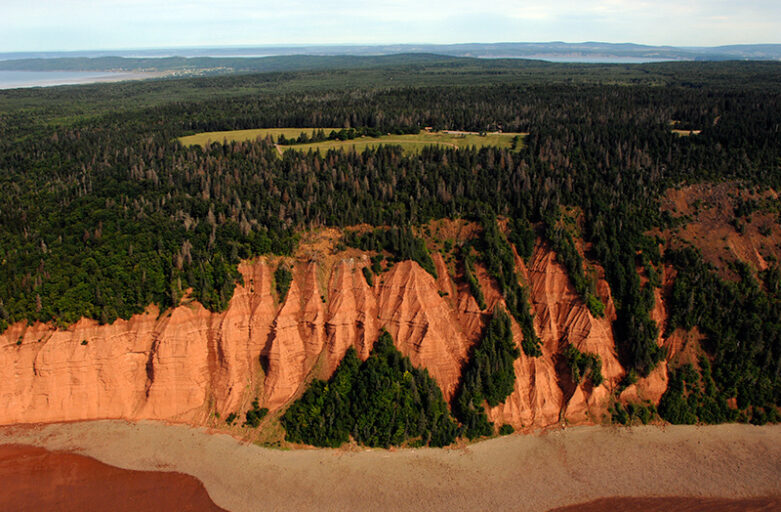By: Shannon Monk, KMKNO
It’s been a lot of fun to connect with so many communities and individuals with an interest in cultural tourism over the last year. We have recently completed a series of virtual community engagement sessions throughout the month of June with Acadia, Bear River, Millbrook, Potlotek, Paqtnkek, Pictou Landing and the Mi’kmaw Native Friendship Centre. We also have a session with Glooscap in July, and additional sessions slated for the fall and winter with Membertou, Eskasoni, Wagmatcook and We’koqma’q. As our COVID-19 restrictions begin to lift, we also hope to revisit communities in person to continue these fascinating discussions.
The focus of our community sessions has been to discuss authenticity – what does it mean to be authentically Mi’kmaq within a tourism context? Our Authenticity Guidelines Interim Report (long version), Community Guide (short version) and Infographic (one-pager) are all now available on the KMKNO website. We welcome your feedback!
Overwhelmingly, we are hearing about Mi’kmaw interest in this important sector and receiving great feedback and suggestions for addressing authenticity. One of the things that surprised me was that many people did not see their connection to cultural tourism. Yet, pretty much anyone who is involved with Mi’kmaw culture is or can be connected to cultural tourism.
Visitors and travellers to Nova Scotia are looking for authentic cultural experiences. Sometimes this means a full day tour or half day workshop with Elders and storytellers, either on the land or on the water. This is the kind of experience offered through some of our nation owned entities such as Eskasoni Cultural Journeys or the Millbrook Cultural and Heritage Centre.
But, it’s so much more than this! If you are an artist selling your paintings, a crafter selling your baskets, if you bead or sew and sell your work, or if you are a singer, dancer, actor or performer – you are involved in cultural tourism. A cultural tourism business doesn’t have to be a big, fancy building all decked out with the latest doodads. It can be anything from a little roadside stand or a studio in your house. It can be a Facebook page where you sell your jewelry or your back garden where you harvest traditional plants or share tea and bannock over the fire. It can be a group of youth learning traditional songs. It can be sharing a feed of lobster on your dock or taking a little paddle around the cove. Visitors just want to get to know the real “us!”
We really want to expand awareness about what cultural tourism possibilities exist here in Nova Scotia. How can we start thinking more broadly and creatively about culture in a tourism context? What role could Grand Council play? What role could Treaty Education play? What role could language and culture specialists play? How could we connect our schools and youth with cultural tourism? What about the Red Road projects happening around the province? Cultural tourism is a natural and logical way to not only reinforce the reclamation of language and culture, but also to create economic opportunities and generate income for individuals and communities. Whether your dreams are big or small, there is a place for everyone at the cultural tourism table.
So many great cultural tourism businesses have started up across the country and we can do it too! There are fantastic videos on the Indigenous Tourism Association of Canada (ITAC) website and on YouTube that showcase different cultural tourism businesses. There are also some “how-to” videos for starting up a cultural tourism business. We have plans over the next few years to build on the great work started with the Nova Scotia Indigenous Tourism Network (NSITEN) to develop partnerships and offer training to build this industry.
As I have mentioned before, Nova Scotia has an iconic, worldwide reputation for welcoming visitors and for being a warm and friendly place. Where do we suppose this originated from? The Mi’kmaq! We have Peace and Friendship Treaties for a reason. Nova Scotia’s reputation is based on Mi’kmaw values. We welcomed newcomers to this country first.
Nova Scotia’s tourism industry is also based on Mi’kmaw culture – in particular, our traditional foods. Come to Nova Scotia for the lobster, the haddock and the fiddleheads! Whose traditional foods are these? Ours.
As we move forward on this cultural tourism journey, it’s important to look at developing our capacity at the local and regional levels and also to look at educating Nova Scotians about our historic role within this industry. This will ensure that we become more visible within the tourism context. More specifically, we can really develop this niche market of cultural tourism. Visitors are hungry for these products and experiences. Let’s feed them!
——————————————————————————————————————————————————————————————————–
We are looking for recommendations for future articles to feature Mi’kmaw cultural tourism. Do you have suggestions or would you like to be featured in our monthly news article? We are looking for interested Mi’kmaw cultural tourism business owners, community entities, crafters, artists, etc. If you have recommendations, please let us know!
If you have any photos that you would be willing to share with us to inform and educate others about Mi’kmaw cultural tourism, we’d love to see them. The photos could be of community landmarks, physical attractions, special locations, events, cultural activities (mawiomis, feasts), cultural products (photos of beadwork or quillwork or baskets, etc), buildings, or any other ideas you may have.. Your name, or the photographer’s name would always be acknowledged when using the photo.

